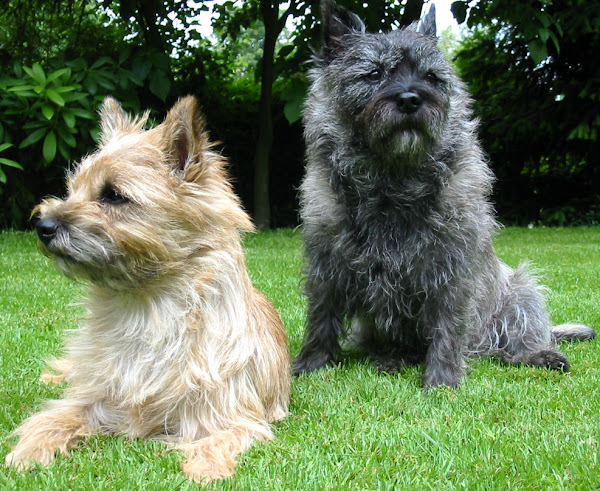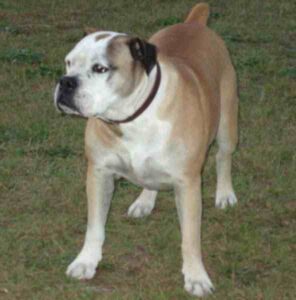The Cairn Terrier dog is a small breed of working dog in the terrier group. And it is one of the oldest terrier breeds. Farmers used them to rid their property of vermin, and they needed a dog with courage, tenacity, and intelligence.
The breed was originated from the Scottish Highlands and recognized as one of the Scotland’s earliest working dogs. It was given the name ‘Cairn’ because the breed’s function was to hunt and chase quarry between the cairns in the Scottish highlands.
Cairns originated in the Scottish Highlands and the Isle of Skye, initially grouped in the “Skye Terrier” class alongside the Scottish and West Highland White Terriers. In the early 1900s, the three breeds began to be bred separately.
Although, the breed had existed long before, the name Cairn Terrier was a compromise suggestion after the breed originally was brought to official shows in the United Kingdom in 1909 under the name Short-haird Skye terriers.
This name was not acceptable to The Kennel Club due to opposition from Skye Terrier breeders, and the name Cairn Terrier was suggested as an alternative. They are usually left-pawed, which has been shown in dogs to correlate to superior performance in tasks related to scent. Cairn terriers are ratters.
The Kennel Club of the United Kingdom gave the Cairn Terrier a separate register in 1912; the first year of recognition, 134 were registered, and it was in that year that the breed was given Championship status.[1]
The first Cairn Terrier dog was imported to the United States by Mrs. Henry F. Price and Mrs. Byron Rodgers in 1913. The Cairn and the West Highland White were interbred until 1917, when the American Kennel Club barred registration to any dog from such interbreeding. That same year, the Cairn Terrier Club of America was granted AKC membership.
Cairn Terrier Dog Characteristics
The Cairn Terrier dogs are an active, game, hardy, small working terrier of the short-legged class. They are very free in their movements, strongly but not heavily built.
They have a harsh weather-resistant outer coat that can be black, gray, cream, wheaten, red, sandy or brindled in any of these colors. Pure black, black and tan, and white are not permitted by many kennel clubs.
A notable characteristic of Cairns is that brindled Cairns frequently change color throughout their lifetimes. It is not uncommon for a brindled Cairn to become progressively more black or silver as it ages.
The Cairn Terrier dog is double-coated, with a soft, dense undercoat and a harsh outer coat. A well-groomed Cairn has a rough-and-ready appearance, free of artifice or exaggeration.
The Cairn Terrier dogs are smaller in size. Their average body height is between 9 and 13 inches at the withers. And their average live body weight is between 4.5 and 7.3 kg.

Temperament
The Cairn Terrier dogs are a wonderfully friendly dog. They are happy and cheerful, and they seem to truly enjoy meeting people. They are also independent, tough, and alert.
Though independent, the Cairn Terrier dog is devoted to it’s family and is happiest when it is part of it’s owner’s daily lives. It likes to be in the house, playing with the kids, following you room to room, joining you at the front door when you greet a friend.
Although, temperament is affected by a number of factors, including heredity, training and socialization. Puppies with nice temperaments are curious and playful, willing to approach people and be held by them.
Like other dogs, the Cairn Terrier dog also needs early socialization. Exposure to many different people, sights, sounds and experiences are very important, especially when the puppies are young. Socialization helps to ensure that your Cairn Terrier puppy grows up to be a well-rounded dog.
Lifespan
Average lifespan of the Cairn Terrier dog is between 12 and 17 years.
Feeding
How much a mature dog eats depends on it’s size, age, build, metabolism and activity level. Dogs are individuals, just like people, and they don’t all need the same amount of food.
The Cairn Terrier dogs are smaller in size, but moderately active. So, their diet should be formulated for a smaller sized breed with moderate exercise needs. Generally 1/2 to 1 cup of high quality food will be enough for a mature dog. Although you can consult with a vet in your area for better recommendations.
Caring
Taking good care of the animals is very important for raising Cairn Terrier dogs. Caring for a Cairn Terrier is not difficult. Because of it’s smaller size, it is a good dog for apartment dwellers. But the breed is hardy enough to enjoy ranch life.
These dogs must have sufficient exercise and activity. A long daily walk or vigorous play for 20 to 30 minutes will help to keep these dogs healthy and alert.
Despite the fact that he’s a quick study, remember that the Cairn also has a stubborn streak. Regular obedience training (beginning with puppy classes) is essential to teach him good manners and respect for your authority. Don’t be surprised if he challenges you — just keep training. Be positive, kind, and consistent.
Health
The Cairn Terrier dogs are generally healthy animals. But like all other dog breeds, they are also prone to certain health conditions.
Their common health problems include craniomandibular osteopathy, cryptorchidism, hypothyroidism, patellar luxation and portosystemic liver shunt. Always try to keep good contact with a vet in your area.
| Breed Name | Cairn Terrier |
| Other Names | None |
| Breed Size | Small |
| Height | Between 9 and 13 inches at the withers |
| Weight | Between 4.5 and 7.3 kg |
| Good as pets | Yes |
| Climate Tolerance | All climates |
| Color | Black, gray, cream, wheaten, red, sandy or brindled in any of these colors |
| Lifespan | Between 12 and 17 years |
| Good for children | Yes |
| Rarity | Common |
| Country of Origin | Scotland |







I appreciate all the information on my Cairn terrier! His so precious to me!. I once had a Westie who was killed accidentally, and their temperaments are so similar. I do want another Westie, too. The Doc sent me to the hospital when my Westie was killed. Recovery was slow. I really adore my dog babies.